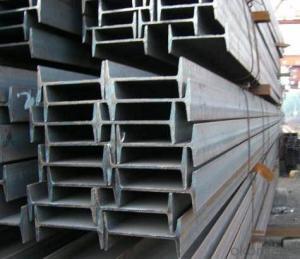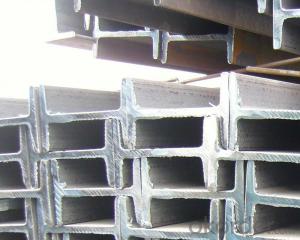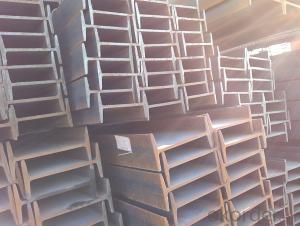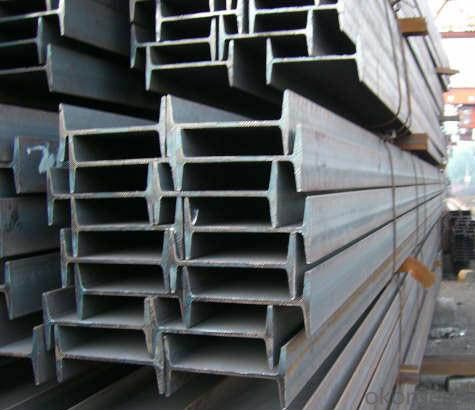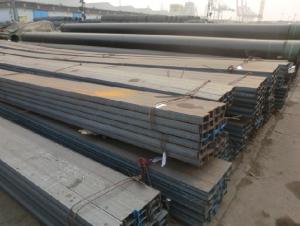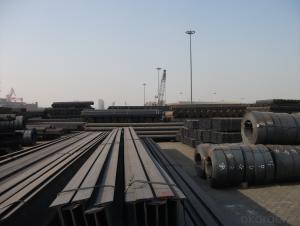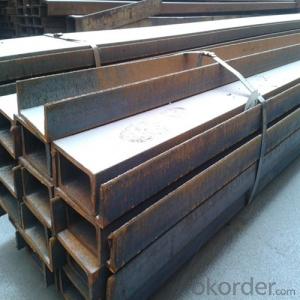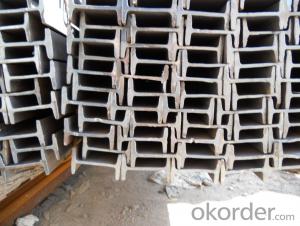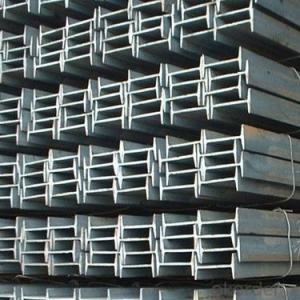European Standard IPE200 with High Quality
- Loading Port:
- Tianjin
- Payment Terms:
- TT or LC
- Min Order Qty:
- 50 m.t
- Supply Capability:
- 15000 m.t/month
OKorder Service Pledge
OKorder Financial Service
You Might Also Like
Product Description of European Standard IPE200 with High Quality:
Specifications of European Standard IPE200 with High Quality:
1.Standard: EN10025
2.Material: S235JR or Equivalent
3.Length: 6m, 12m
4.Size:
Size (mm) | Mass (kg/m) |
| 200*100*5.6 | 22.4 |
Usage & Applications of European Standard IPE200 with High Quality:
Commercial building structure;
Pre-engineered buildings;
Machinery support structures;
Prefabricated structure;
Medium scale bridges.
Packaging & Delivery of European Standard IPE200 with High Quality:
1. Transportation: the goods are delivered by truck from mill to loading port, the maximum quantity can be loaded is around 40MTs by each truck. If the order quantity cannot reach the full truck loaded, the transportation cost per ton will be little higher than full load.
2. With bundles and load in 20 feet/40 feet container, or by bulk cargo, also we could do as customer's request.
3. Marks:
Color mark: There will be color marking on both end of the bundle for the cargo delivered by bulk vessel. That makes it easily to distinguish at the destination port.
Tag mark: There will be tag mark tied up on the bundles. The information usually including supplier logo and name, product name, made in China, shipping marks and other information request by the customer.
If loading by container the marking is not needed, but we will prepare it as customer's request.
FAQ:
Q1: Why buy Materials & Equipment from OKorder.com?
A1: All products offered byOKorder.com are carefully selected from China's most reliable manufacturing enterprises. Through its ISO certifications, OKorder.com adheres to the highest standards and a commitment to supply chain safety and customer satisfaction.
Q2: How do we guarantee the quality of our products?
A2: We have established an advanced quality management system which conducts strict quality tests at every step, from raw materials to the final product. At the same time, we provide extensive follow-up service assurances as required.
Q3: How soon can we receive the product after purchase?
A3: When we receive the advance payment or original LC, we will arrange production. The shipping date is dependent upon the quatity, how many sizes you want and the plan of production, but is typically 1 month to 2 month days from the beginning of production.
Images of European Standard IPE200 with High Quality:
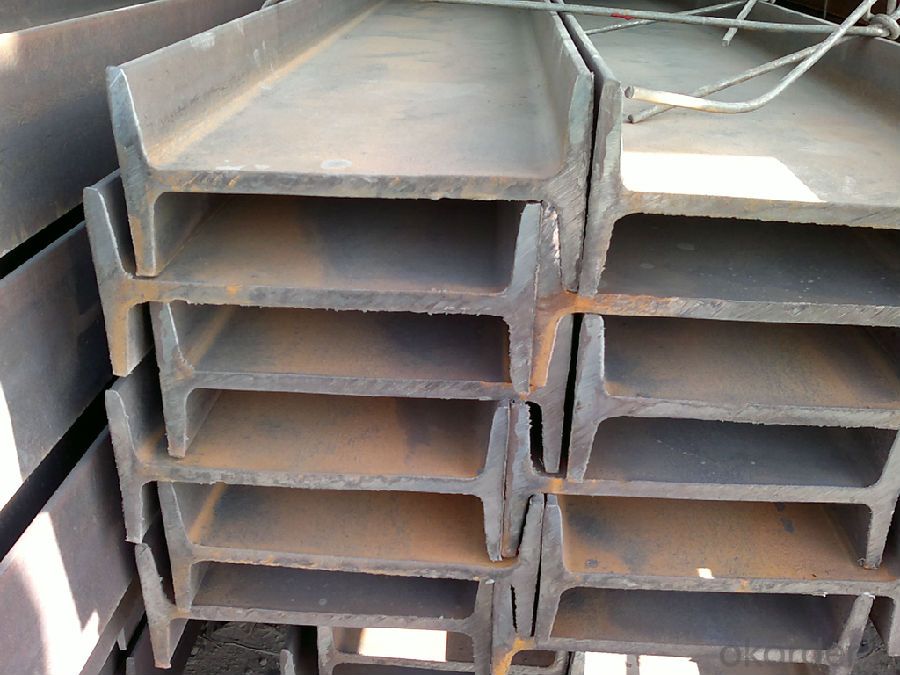
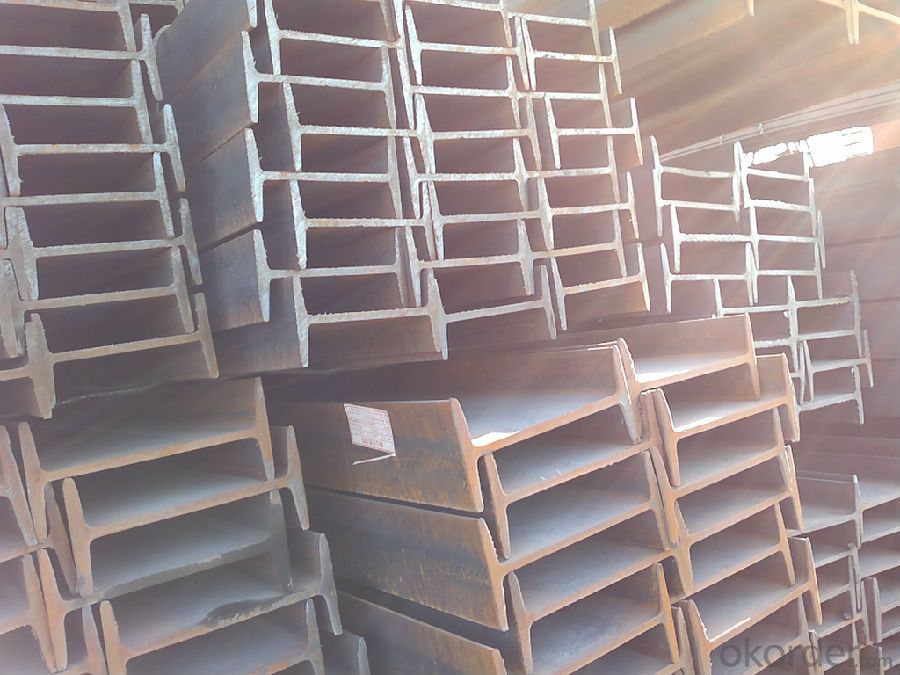
*If you would like to get our price, please inform us the size, standard/material and quantity. Thank you very much for your attention.
- Q: What is the modulus of elasticity of No. 16 I-beam?
- When the material is in the elastic deformation stage, its stress and strain should be changed into a positive proportion (that is to say, according to Hooke's law), and the coefficient of proportionality is called the elastic modulus. The elastic modulus of the unit is dyne per square centimeter. "Modulus of elasticity" is a physical quantity describing the elasticity of matter. It is a general term. It can be expressed as "Young's modulus", "shear modulus", "bulk modulus" and so on.
- Q: What's the difference between I-beam ipeaaa and IPE?
- I-beam is divided into ordinary I-beam and light I-beam, H steel three. It is a section steel whose shape is trough.
- Q: Can steel I-beams be used in residential bridges?
- Yes, steel I-beams can be used in residential bridges. They are commonly used in bridge construction due to their strength, durability, and ability to support heavy loads. Steel I-beams provide a strong structural framework for bridges, ensuring the safety and stability required for residential use.
- Q: What are the different grades of steel used for manufacturing I-beams?
- The different grades of steel used for manufacturing I-beams typically include A36, A572, A588, and A992.
- Q: Can steel I-beams be used for architectural canopies or awnings?
- Yes, steel I-beams can be used for architectural canopies or awnings. Steel I-beams are known for their strength and durability, making them a popular choice for structural applications. When used for canopies or awnings, steel I-beams provide a reliable framework that can withstand various weather conditions and support the weight of the canopy or awning materials. Additionally, steel I-beams can be customized to fit the desired design and dimensions, allowing for a versatile and aesthetically pleasing architectural feature. However, it is important to consider factors such as the load requirements, local building codes, and the need for additional weatherproofing and finishing options when using steel I-beams for canopies or awnings. Consulting with a structural engineer or architect is recommended to ensure the proper design and installation of steel I-beams for architectural canopies or awnings.
- Q: What are the common challenges involved in working with steel I-beams?
- When dealing with steel I-beams, there are several challenges that one may encounter. One of the most common challenges is their weight and size. Steel I-beams are heavy and often require specialized equipment and machinery for transportation and installation, leading to logistical difficulties and increased project costs. Another challenge is their lack of flexibility. Although steel I-beams are known for their strength and durability, this rigidity can make it difficult to accommodate changes or modifications during construction. Any alterations may necessitate cutting, welding, or additional reinforcements, which can be time-consuming and expensive. Maintaining the structural integrity of steel I-beams is also a challenge. They are prone to corrosion, especially in high humidity or chemical-exposed environments. To prevent rust and ensure long-lasting durability, proper coating and regular maintenance are essential. Furthermore, the installation of steel I-beams often requires precise measurement and alignment to ensure proper load distribution and structural stability. Any inaccuracies or errors in measurement can result in structural issues or safety hazards. Fire resistance poses another challenge. Although steel I-beams have a high melting point, prolonged exposure to high temperatures can weaken their structural integrity. To mitigate this risk, fire-resistant coatings or additional fire protection measures are often necessary. Lastly, cost can be a significant challenge when working with steel I-beams. Steel is generally more expensive than other building materials, so budget constraints may limit their use in construction projects. Moreover, the fluctuating prices of steel can impact project budgets and timelines. In conclusion, while steel I-beams offer numerous advantages such as strength and durability, they also present challenges related to weight, rigidity, maintenance, alignment, fire resistance, and cost. Overcoming these challenges requires careful planning, expertise, and adherence to industry standards and best practices.
- Q: Can steel I-beams be used for food processing plants?
- Yes, steel I-beams can be used for food processing plants. Steel I-beams provide structural support and are commonly used in industrial settings, including food processing plants, where they offer strength, durability, and stability for various equipment and infrastructure.
- Q: Do steel I-beams require any special insulation or soundproofing measures?
- Steel I-beams do not typically require any special insulation or soundproofing measures. Steel is a highly dense and rigid material that naturally has good sound insulation properties. Additionally, I-beams are usually used in structural applications where soundproofing is not a primary concern, such as in the construction of buildings, bridges, or other large structures. However, in certain cases where noise reduction is important, such as in recording studios or theaters, additional soundproofing measures may be taken, but these measures would typically involve adding insulation or soundproofing materials to the surrounding walls, ceilings, or floors, rather than directly to the steel I-beams themselves.
- Q: Can steel I-beams be used for sports stadiums or arenas?
- Yes, steel I-beams can definitely be used for sports stadiums or arenas. Steel I-beams are commonly used in the construction of large structures like stadiums due to their high strength and load-bearing capabilities. They provide the necessary support and stability required to handle the weight of the structure, seating areas, and other components. Additionally, steel I-beams offer flexibility in the design and construction process, allowing for the creation of unique and innovative stadium structures.
- Q: How do I weld 3 steel plates into I-beam?
- Welded I-beam is generally used to take the load of the beam, most of the plate using low alloy high strength steel. The welding process is to prevent the occurrence of cracks, and the bending deformation of the welded I-beam is sure to happen.
Send your message to us
European Standard IPE200 with High Quality
- Loading Port:
- Tianjin
- Payment Terms:
- TT or LC
- Min Order Qty:
- 50 m.t
- Supply Capability:
- 15000 m.t/month
OKorder Service Pledge
OKorder Financial Service
Similar products
Hot products
Hot Searches
Related keywords
